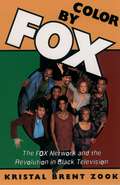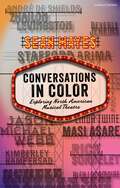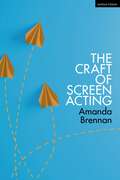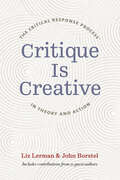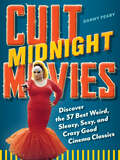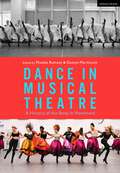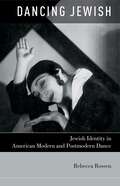- Table View
- List View
Circus Ringmaster (Large Print)
This is a picture of the circus ringmaster in his traditional costume holding a whip. He is standing facing forward in the middle of the page so all his limbs and facial features can be seen. There is a locator dot shown, which will be at the top left of the page when the image is the right way up. At the top of the page is the ringmaster's tall top hat with some wisps of hair sticking out. Just down the page is his face with two eyes, nose and mouth visible. Down again are his bow tie, shirt and three-buttoned waistcoat. To either side are the lapels of his long frock coat, which comes down to his waist at the front and to his knees at the back. It has two buttons to the left of the waistcoat buttons. His arms are held out wide, the one to the right is holding the whip. Further down the page the ringmaster wears long trousers tucked into his long leather riding boots.
Circus Ringmaster (UEB Contracted)
This is a picture of the circus ringmaster in his traditional costume holding a whip. He is standing facing forward in the middle of the page so all his limbs and facial features can be seen. There is a locator dot shown, which will be at the top left of the page when the image is the right way up. At the top of the page is the ringmaster's tall top hat with some wisps of hair sticking out. Just down the page is his face with two eyes, nose and mouth visible. Down again are his bow tie, shirt and three-buttoned waistcoat. To either side are the lapels of his long frock coat, which comes down to his waist at the front and to his knees at the back. It has two buttons to the left of the waistcoat buttons. His arms are held out wide, the one to the right is holding the whip. Further down the page the ringmaster wears long trousers tucked into his long leather riding boots.
Circus Ringmaster (UEB uncontracted)
This is a picture of the circus ringmaster in his traditional costume holding a whip. He is standing facing forward in the middle of the page so all his limbs and facial features can be seen. There is a locator dot shown, which will be at the top left of the page when the image is the right way up. At the top of the page is the ringmaster's tall top hat with some wisps of hair sticking out. Just down the page is his face with two eyes, nose and mouth visible. Down again are his bow tie, shirt and three-buttoned waistcoat. To either side are the lapels of his long frock coat, which comes down to his waist at the front and to his knees at the back. It has two buttons to the left of the waistcoat buttons. His arms are held out wide, the one to the right is holding the whip. Further down the page the ringmaster wears long trousers tucked into his long leather riding boots.
Clown riding a 'Giraffe' unicycle (Large Print)
This is an image of a circus clown riding a one-wheeled cycle in the middle of the page. He is facing to the right with only one eye visible. There is a locator dot shown, which will be at the top left of the page when the image is the right way up. At the top centre of the page is the clown's little bowler hat sitting on his long hair. Just to the right of this is his face seen from the side with one eye, his comedy red nose and his big wide mouth. His arms are thrown out wide to the left and right from his right-facing body and down the page from this is his bottom sitting on the seat of the unicycle. Down the page again is the frame of the cycle with the clown's legs to the left and right and his feet in enormous clown boots on the pedals of the machine. His foot to the left is behind the arm of the pedal. At the bottom of the page is the cycle's wheel, connected to the pedals by a chain.
Clown riding a 'Giraffe' unicycle (UEB Contracted)
This is an image of a circus clown riding a one-wheeled cycle in the middle of the page. He is facing to the right with only one eye visible. There is a locator dot shown, which will be at the top left of the page when the image is the right way up. At the top centre of the page is the clown's little bowler hat sitting on his long hair. Just to the right of this is his face seen from the side with one eye, his comedy red nose and his big wide mouth. His arms are thrown out wide to the left and right from his right-facing body and down the page from this is his bottom sitting on the seat of the unicycle. Down the page again is the frame of the cycle with the clown's legs to the left and right and his feet in enormous clown boots on the pedals of the machine. His foot to the left is behind the arm of the pedal. At the bottom of the page is the cycle's wheel, connected to the pedals by a chain.
Clown riding a 'Giraffe' unicycle (UEB uncontracted)
This is an image of a circus clown riding a one-wheeled cycle in the middle of the page. He is facing to the right with only one eye visible. There is a locator dot shown, which will be at the top left of the page when the image is the right way up. At the top centre of the page is the clown's little bowler hat sitting on his long hair. Just to the right of this is his face seen from the side with one eye, his comedy red nose and his big wide mouth. His arms are thrown out wide to the left and right from his right-facing body and down the page from this is his bottom sitting on the seat of the unicycle. Down the page again is the frame of the cycle with the clown's legs to the left and right and his feet in enormous clown boots on the pedals of the machine. His foot to the left is behind the arm of the pedal. At the bottom of the page is the cycle's wheel, connected to the pedals by a chain.
Color By Fox: The Fox Network And The Revolution In Black Television
by Kristal Brent ZookFollowing the overwhelming success of "The Cosby Show" in the 1980s, an unprecedented shift took place in television history: white executives turned to black dollars as a way of salvaging network profits lost in the war against video cassettes and cable T.V. Not only were African-American viewers watching disproportionately more network television than the general population but, as Nielsen finally realized, they preferred black shows. As a result, African-American producers, writers, directors, and stars were given an unusual degree of creative control over shows such as "The Fresh Prince of Bel Air," "Roc," "Living Single," and "New York Undercover". What emerged were radical representations of African-American memory and experience. Offering a fascinating examination of the explosion of black television programming in the 1980s and 1990s, this book provides, for the first time ever, an interpretation of black TV based in both journalism and critical theory. Locating a persistent black nationalist desire--a yearning for home and community--in the shows produced by and for African-Americans in this period, Kristal Brent Zook shows how the Fox hip-hop sitcom both reinforced and rebelled against earlier black sitcoms from the sixties and seventies. Incorporating interviews with such prominent executives, producers, and stars as Keenen Ivory Wayans, Sinbad, Quincy Jones, Robert Townsend, Charles Dutton, Yvette Lee Bowser, and Ralph Farquhar, this study looks at both production and reception among African-American viewers, providing nuanced readings of the shows themselves as well as the sociopolitical contexts in which they emerged. While black TV during this period may seem trivial or buffoonish to some, Color by Fox reveals its deep-rooted ties to African-American protest literature and autobiography, and a desire for social transformation.
Comedy: A Critical Introduction
by Eli RozikHerewith an original approach to the study of comedy. While assimilating theoretical insights from Aristotle to the present day, it contests, inter alia, the theory of comedy's ritual origin; challenges the age-old and continuing attempts to determine the structure of action that characterises comedy; and suggests instead that structures of action are shared by all genres, and that it is the specific mood that accounts for their differences. Mood is a prism through which a playwright wishes the spectator to perceive a fictional world. Comedy is characterised by its light-hearted mood, which generates a specific kind of laughter. If mood determines the genre of a fictional world, in contrast to current theory, comedy, satiric drama and grotesque drama are different genres promoting different moods and aiming at different effects. Each genre should thus be read and experienced according to its inherent rules and not in terms of a theory that lumps these genres together. The book discusses the pivotal role of commedia dell'arte in both reflecting comedy's classical tradition and influencing subsequent developments, especially in comedy's style of acting; it explores the relations between comedy and carnival and between comedy and joke-telling; probes the view that comedy is characterised by a unique vision; and examines comedy in different media -- such as cinema, comics, puppet theatre, radio drama and TV drama. Eli Rozik questions the traditional semiotic view that all meaning is in the text, and suggests that, in generating comedic meaning, the spectator's contribution/reaction is no less vital than that of the text itself. Major contributions to a general theory of comedy, and to a sound methodology for the analysis of comedies, are presented, and ample reference to comedies and/or pertinent analyses of such comedies, written over the course of 2,500 years of theatre recorded history, is provided to enable readers to grasp ideas in their original terminology and logic. Each presentation is accompanied by critical comments which attempt both to introduce the problems involved and suggest possible solutions.
The Company of Wolves (Devil's Advocates)
by James GraceyCo-written by Irish filmmaker Neil Jordan and British novelist Angela Carter, and based on several short stories from Carter's collection The Bloody Chamber, The Company of Wolves (1984) is a provocative reinvention of the fairy tale of Little Red Riding Hood. Unraveling a feverish metaphor for the blossoming of a young girl's sexuality and her subsequent loss of innocence, the film entwines symbolism and metaphor with striking visuals and grisly effects. Released in the early 1980s, a time which produced several classic werewolf films (including An American Werewolf in London and The Howling), The Company of Wolves sets itself apart from the pack with its overtly literary roots, feminist stance, and art-house leanings. The film's narrative takes the form of a puzzle box, unfolding as dreams within dreams, and stories within stories, which lead further into the dark woods of the protagonist's psyche, as she finds herself on the cusp of womanhood. This Devil's Advocate explores all these aspects, as well as placing the film in the context of the careers of its creators and its position as an example of the "Female Gothic."
The Conjuring (Devil's Advocates)
by Kevin J. Wetmore Jr.In 2013 an apparently simple, back-to-basics scary movie transformed horror cinema for the rest of the decade. Based on the allegedly true story of the Perron family haunting and subsequent investigation by ghost hunters Ed and Lorraine Warren, The Conjuring has to-date spawned six sequels and prequels, making up a Conjuring ‘universe’ that has taken over a billion dollars around the world. The New York Times called The Conjuring ‘a fantastically effective haunted-house movie’ which, following his earlier film Insidious, established director James Wan as a force in horror cinema. In this Devil’s Advocates, horror scholar Kevin Wetmore examines what elements in the film are truly terrifying, how the filmmakers’ claims of being based on a true story hold up against the actual history of the haunting and the Warrens, and the relationship between The Conjuring and the many films in its universe. Along the way this book also considers how games, toys and dolls play an important role in the series, offers a critique of gender roles in the films, and asks the question, what is actually ‘conjured’ in The Conjuring? The delightful result is an in-depth, close reading of a film that uses standard horror tropes masterfully to create a truly scary film.
Conversations in Color: Exploring North American Musical Theatre
by Sean MayesStep into a world where the brightest creative minds of contemporary musical theatre share their insights and inspirations.Conversations in Color unveils the untold stories and perspectives of remarkable artists of color shaping the stage today. Delve into captivating interviews with visionaries like André De Shields, Alex Lacamoire, Baayork Lee, and many more, as they discuss the intricate artistry behind crafting unforgettable musical experiences.Unlike any other, this groundbreaking book offers an indispensable resource for the theatre industry. Explore the multifaceted process of musical creation through conversations with directors, choreographers, music directors, orchestrators, stage managers, writers, librettists, artistic directors, and fight directors. Discover the secrets of their craft, from project preparation to rehearsal techniques, career insights, and personal anecdotes. Drawing from Broadway and regional productions across North America, these exclusive interviews provide invaluable firsthand knowledge that transcends boundaries.Conversations in Color fills a vital void in musical theatre studies, shedding light on the absence of diverse perspectives. Immerse yourself in the minds of leading creative practitioners, gaining practical steps and inspiration for your own artistic endeavors. Whether you're a professional or aspiring performer, director, or designer, this book serves as a compass, guiding you towards excellence.Unlock the secrets of musical theatre's most extraordinary talents: a vibrant world of creativity awaits, where voices that have been under-acknowledged are finally heard, and where passion and innovation reign supreme.
Cousin Betty
by Honoré De BalzacLa Cousine Bette (French pronunciation: [la kuzin bɛt], Cousin Bette) is an 1846 novel by French author Honoré de Balzac. Set in mid-19th century Paris, it tells the story of an unmarried middle-aged woman who plots the destruction of her extended family. Bette works with Valérie Marneffe, an unhappily married young lady, to seduce and torment a series of men. One of these is Baron Hector Hulot, husband to Bette's cousin Adeline. He sacrifices his family's fortune and good name to please Valérie, who leaves him for a tradesman named Crevel. The book is part of the Scènes de la vie parisienne section of Balzac's novel sequence La Comédie humaine ("The Human Comedy").
Cousin Pons
by Honoré De BalzacMild, harmless and ugly to behold, the impoverished Pons is an ageing musician whose brief fame has fallen to nothing. Living a placid Parisian life as a bachelor in a shared apartment with his friend Schmucke, he maintains only two passions: a devotion to fine dining in the company of wealthy but disdainful relatives, and a dedication to the collection of antiques. When these relatives become aware of the true value of his art collection, however, their sneering contempt for the parasitic Pons rapidly falls away as they struggle to obtain a piece of the weakening man's inheritance. Taking its place in the Human Comedy as a companion to Cousin Bette, the darkly humorous Cousin Pons is among of the last and greatest of Balzac's novels concerning French urban society: a cynical, pessimistic but never despairing consideration of human nature.
The Craft (Devil's Advocates)
by Miranda CorcoranIn recent years, teen witches have become highly visible figures. Fictional adolescent witches have headlined popular television shows like The Chilling Adventures of Sabrina (2018-2021) and American Horror Story: Coven (2013-2014), while their real-life counterparts have become minor celebrities on Instagram and TikTok. As such, now is the ideal time to revisit Andrew Fleming’s 1996 supernatural horror film The Craft. A cult favourite, especially amongst young women, The Craft is a story about teen witches that employs the conventions of occult horror to explore themes of power, friendship and responsibility. This entry in the Devil’s Advocates series is a deep dive into the history, production and meaning of The Craft. Situating The Craft within the teen horror revival of the 1990s, Miranda Corcoran analyses the film within the context of nineties popular and political culture, while also discussing its treatment of issues such as race, gender, sexuality and class. Delving into the history of witchcraft beliefs and persecutions, this book also investigates how The Craft modifies the archetype of the witch and traces the film’s influence on subsequent popular culture.
The Craft of Screen Acting
by Amanda BrennanHave you been working as an actor, but want to refine your craft and take your performance to the next level? Or do you want to transition from stage to screen acting and would like to better understand the skills required? In this essential book for actors, Amanda Brennan offers a specifically psychophysical approach to screen acting, which provides an understanding of the body as the springboard for creative exploration. Starting with understanding your own instrument, you will learn how to prepare and tune the body for creative work. This is followed by strategies for the refinement of craft, including exercises on voice, movement, character development and rehearsal processes for screen. Experienced actors, directors, casting directors and industry professionals, such as Asa Butterfield (The Boy in the Striped Pajamas, Hugo, Sex Education), Noah Jupe (Honey Boy, The Quiet Place,The UnDoing), Janis Pugh (Chuck Chuck Baby) and James Kent (Testament of Youth, The Aftermath) and Rebecca Lloyd offer their comments and share invaluable experiences throughout the book.
Creepshow (Devil's Advocates)
by Simon BrownReleased in cinemas in 1982, Creepshow is typically regarded as a minor entry in both the film output of George A. Romero and the history of adaptations of the works of Stephen King. Yet this lack of critical attention hides the fact that Creepshow is the only full collaboration between America’s bestselling author of horror tales and one of the masters of modern American horror cinema. Long considered too mainstream for the director of Dawn of the Dead (1978), too comic for the author that gave audiences the film versions of Carrie (1976) and The Shining (1980), and too violent for a cinemagoing public turning away from gore cinema in the autumn of 1982, Creepshow is here reassessed by Simon Brown, who examines the making and release of the film and its legacy through a comic book adaptation and two sequels. His analysis focuses on the key influences on the film, not just Romero and King, but also the anthology horrors of Amicus Productions, body horror cinema, and the special make up effects of Tom Savini, the relationship between horror and humor, and most notably the tradition of EC horror comics of the 1950s, from which the film draws both its thematic preoccupations and its visual style. Ultimately the book argues that not only is Creepshow a major work in the canons of Romero and King, but also that it represents a significant example of the portmanteau horror film, of the blending of horror and comedy, and finally, decades before the career of Zack Snyder (Watchmen, Man of Steel), of attempting to recreate a comic book aesthetic on the big screen.
Critique Is Creative: The Critical Response Process® In Theory And Action
by Liz Lerman John BorstelCruising (Devil's Advocates)
by Eugenio Ercolani Marcus StigleggerIn the fading atmosphere of the New Hollywood era, William Friedkin – the wunderkind director with an Academy Award for his cop drama, The French Connection (1971) who then scored an even bigger success with The Exorcist (1973) – began work on what would prove to be the most controversial film of his career: Cruising (1980). In the process he established a template for a sub-genre, the serial killer thriller, that would thrive long after his film had left theatres, having caused widespread offence among the very audience he'd hoped to appeal to, via a campaign mobilised by the counter-culture press. As such, Cruising can be read as a bitter farewell to the seventies and its cinema and industry. This Devil's Advocate dives deep into the phenomenon that is Cruising, examining its creative context and its protagonists, as well as examining its ongoing popularity as it turns 40 in 2020.
Cult Midnight Movies: Discover the 37 Best Weird, Sleazy, Sexy, and Crazy Good Cinema Classics
by Danny PearyEraserhead to Blue Velvet to The Rocky Horror Picture Show to Harold and Maude—midnight movies keep you up way past your bedtime, whether you&’re curled up on the couch or in a theater full of like-minded enthusiasts. They invoke responses ranging from &“Why am I watching this?&” to &“I can&’t believe I&’m watching this!&” In this collection of 37 essays drawn from his revered Cult Movies series, cult film specialist Danny Peary examines, dissects, defends, and exalts midnight movies from his unique and engaging perspective. His writing is a cornerstone of the cult film culture that continues to flourish today. New to this ebook series are Danny Peary&’s cult movie checklists for each genre. Every midnight movie fan will walk away with newly discovered gems to watch, and a newfound appreciation of his or her favorites.
The Curse of Frankenstein (Devil's Advocates)
by Marcus HarmesCritics abhorred it, audiences loved it, and Hammer executives where thrilled with the box office returns: The Curse of Frankenstein was big business. The 1957 film is the first to bring together in a horror movie the 'unholy two', Christopher Lee and Peter Cushing, together with the Hammer company, and director Terence Fisher, combinations now legendary among horror fans. In his Devil's Advocate, Marcus Harmes goes back to where the Hammer horror production started, looking at the film from a variety of perspectives: as a loose literaryadaptation of Mary Shelley's novel; as a film that had, for legal reasons, to avoid adapting from James Whale's 1931 film for Universal Pictures; and as one which found immediate sources of inspiration in the Gainsborough bodice rippers of the 1940s and the poverty row horrors of the 1950s. Later Hammer horrors may have consolidated the reputation of the company and the stars, but these works had their starting point in the creative and commercial choices made by the team behind The Curse of Frankenstein. In the film sparks fly, new life is created and horrors unleashed but the film itself was a jolt to 1950s cinema going that has never been entirely surpassed.
Dance in Musical Theatre: A History of the Body in Movement
From Oklahoma! and West Side Story, to Spring Awakening and Hamilton, dance remains one of the most important and key factors in musical theatre. Through the integration of song and dance in the 'dream ballets' of choreographers like Agnes De Mille; the triple threat performances of Jerome Robbins' dancers; the signature style creation by choreographers like Bob Fosse with dancers like Gwen Verdon; and the contemporary, identity-driven work of choreographers like Camille A. Brown, the history of the body in movement is one that begs study and appreciation. Dance in Musical Theatre offers guidelines in how to read this movement by analyzing it in terms of composition and movement vocabulary whilst simultaneously situating it both historically and critically. This collection provides the tools, terms, history, and movement theory for reading, interpreting, and centralizing a discussion of dance in musical theatre, importantly, with added emphasis on women and artists of color. Bringing together musical theatre and dance scholars, choreographers and practitioners, this edited collection highlights musical theatre case studies that employ dance in a dramaturgically essential manner, tracking the emergence of the dancer as a key figure in the genre, and connecting the contributions to past and present choreographers. This collection foregrounds the work of the ensemble, incorporating firsthand and autoethnographic accounts that intersect with historical and cultural contexts. Through a selection of essays, this volume conceptualizes the function of dance in musical: how it functions diegetically as a part of the story or non-diegetically as an amplification of emotion, as well as how the dancing body works to reveal character psychology by expressing an unspoken aspect of the libretto, embodying emotions or ideas through metaphor or abstraction.Dance in Musical Theatre makes dance language accessible for instructors, students, and musical theatre enthusiasts, providing the tools to critically engage with the work of important choreographers and dancers from the beginning of the 20th century to today.

